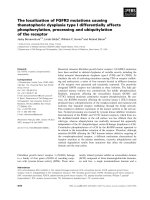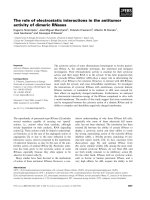Tài liệu Báo cáo khoa học: "The Effect of Pitch Accenting on Pronoun Referent Resolution" ppt
Bạn đang xem bản rút gọn của tài liệu. Xem và tải ngay bản đầy đủ của tài liệu tại đây (294.57 KB, 3 trang )
The Effect of Pitch Accenting on Pronoun Referent Resolution
Janet Cahn
Massachusetts Institute of Technology
Cambridge, MA 02139
USA
cahn~media.mit.edu
Abstract
By strictest interpretation, theories of both
centering and intonational meaning fail
to predict the existence of pitch accented
pronominals. Yet they occur felicitously
in spoken discourse. To explain this, I
emphasize the dual functions served by
pitch accents, as markers of both propo-
sitional (semantic/pragmatic) and atten-
tional salience. This distinction underlies
my proposals about the attentional conse-
quences of pitch accents when applied to
pronominals, in particular, that while most
pitch accents may weaken or reinforce a
cospecifier's status as the center of atten-
tion, a contrastively stressed pronominal
may force a shift, even when contraindi-
cated by textual features.
Introduction
To predict and track the center of attention in dis-
course, theories of centering (Grosz
et al.,
1983;
Brennan
et al.,
1987; Grosz
et al.,
1989) and im-
mediate focus (Sidner, 1986) rely on syntactic and
grammatical features of the text such as pronominal-
ization and surface sentence position. This may be
sufficient for written discourse. For oral discourse,
however, we must also consider the way intonation
affects the interpretation of a sentence, especially the
cases in which it alters the predictions of centering
theories. I investigate this via a phenomenon that,
by the strictest interpretation of either centering or
intonation theories, should not occur the case of
pitch accented pronominals.
Centering theories would be hard pressed to pre-
dict pitch accents on pronominals, on grounds of
redundancy. To bestow an intonational marker of
salience (the pitch accent) on a textual marker of
salience (the pronominal) is unnecessarily redundant
and especially when textual features correctly pre-
dict the focus of attention.
Intonational theories would be similarly hard
pressed, but on grounds of information quality and
efficient use of limited resources. Given the serial
and ephemeral nature of speech and the limits of
working memory, it is most expedient to mark as
salient the information-rich nonpronominals, rather
than their semantically impoverished pronominal
stand-ins. To do otherwise is an injudicious use of
an attentional cue.
However, when uttered with contrastive stress on
the pronouns,
(I) John introduced Bill as a psycholinguist
and then HE insulted HIM.
(after Lakoff, 1971) is felicitously understood to
mean that after a slanderous introduction, Bill re-
taliated in kind against John.
What makes (1) felicitous is that the pitch ac-
cents on the pronominals contribute attentional in-
formation that cannot be gleaned from text alone.
This suggests an attentional component to pitch ac-
cents, in addition to the propositional component
explicated in Pierrehumbert and Hirschberg (1990).
In this paper, I combine their account of pitch ac-
cent semantics with Grosz, Joshi and Weinstein's
(1989) account of centering to yield insights into the
phenomenon of pitch accented pronominals, and the
attentional consequences of pitch accents in general.
The relevant claims in PH90 and GJW89 are re-
viewed in the next two sections.
Pitch accent semantics
A pitch accent
is a distinctive intonational con-
tour applied to a word to convey sentential stress
(Bolinger, 1958; Pierrehumbert, 1980). PH90 cata-
logues six pitch accents, all combinations of high (H)
and low (L) pitch targets, and structured as a main
tone and an optional leading or trailing tone. The
form of the accent L, H, L+H or H+L informs
about the operation that would relate the salient
item to the
mutual beliefs 1
of the conversants; the
main tone either commits (H*) or fails to commit
1 Mutual beliefs:
propositions expressed or implied by
the discourse, and which all conversants believe each
other to accept as true and relevant same (Clark and
Marshall, 1981).
290
(L*) to the salience of the proposition itself, or the
relevance of the operation.
• H* predicates a proposition as mutually be-
lieved, and proclaims its addition to the set of
mutual beliefs; L* fails to predicate a proposi-
tion as mutually believed. As PH90 points out,
failure to predicate has contradictory sources:
the proposition has already been predicated as
mutually believed; or, the speaker, but not the
hearer, is prevented from predication (perhaps
by social constraints); or the speaker actively
believes the salient proposition to be false.
• H+L evokes an inference path. H*+L commits
to the existence of inference path that would
support the proposition as mutually believed,
indicates that it can be found or derived from
the set of mutual beliefs; H+L* conveys uncer-
tainty about the existence of such a path.
• L+H evokes a scale or ordered set to which the
accented constituent belongs: L+H* commits
to the salience of the scale, and is typically used
to convey contrastive stress; L*+H also evokes
a scale but fails to commit to its salience, e.g.,
conveying uncertainty about the salience of the
scale with regard to the accented constituent.
Centering structures and operations
To explain how speakers move an entity in and out
of the center of [mutual] attention, GJW89 formal-
izes attentional operations with two computational
structures the forward.looking center list (Cf) and
the backward-looking center (the Cb). Cf is a par-
tially ordered list of centering candidates; 2 the Cb,
at the head of Cf, is the current center of attention.
After each utterance, one of three operations are
possible:
* The Cb retains both its position at the head of
Cf and its status as the Cb; therefore it contin-
ues as the center in the next utterance.
• The Cb retains its centered status for the cur-
rent utterance but its rank is lowered it no
longer resides at the head of Cf and therefore
ceases to be the center in the next utterance.
• The Cb loses both its centered status and rank-
ing in the current utterance as attention shifts
to a new center.
In addition, GJW89 constrains pronominalization
such that no element in an utterance can be real-
ized as a pronoun unless the Cb is also realized as a
pronoun, and imposes a preference ordering for op-
erations on Cf, such that the least reordering is al-
ways preferred. That is, a sequence of continuations
2For simplicity's sake, we assume the items in Cf to be
words and phrases; in actuality, they may be nonlexical
representations of concepts, or some hybrid of lexical,
conceptual and sensory data.
is preferred over a sequence of retentions, which is
preferred over a sequence of shifts.
When intonation and centering collide
My synthesis of the claims in PH90 and GJW89 pro-
duces an attentional interpretation of pitch accents,
modeled by operations on Cf, and derived for each
accent from their corresponding propositional effect
as described in PH90.
The corollaries for pitch accented pronominals are:
(1) when a pitch accent is applied to a pronominal,
its main effect is attentional, on the order of items
in Cf; (2) the obligation to accent a pronominal for
attentional r~asons depends on the variance between
what the text predicts and what the speaker would
like to assert about the order of items in Cf.
These hypotheses arise from the following chain of
assumptions:
(1) To analyze the effects of pitch accents on
pronominals, it is necessary to distinguish between
attentional and propositional salience. Attentional
salience measures the degree to which an item is
salient, expressible as a partial ordering, e.g., its
ranking in Cf. It is a quantitative feature. In con-
trast, propositional salience, addressing an item's
status in relation to mutual beliefs, is qualitative.
It is calculated through inference chains that link
semantic and pragmatic propositions.
Both attentional (Cf) and propositional (mu-
tual beliefs) structures are updated throughout.
However, unlike attentional structures which are
ephemeral in various time scales and empty at the
end of the discourse (Grosz and Sidner, 1986), mu-
tual beliefs persist throughout the conversation, pre-
serving at the end the semantic and pragmatic out-
come of the discourse.
In addition, while propositions can be excluded
from the mutual beliefs because they fail to meet
some inclusion criterion, no lexical denotation is ex-
cluded from Cf regardless of its propositional value.
This is because the salience most relevant to the at-
tentional state is the proximity of a discourse entity
to the head of Cf the closer it is, the more it is
centered and therefore, attentionally salient.
(2) Pitch accents on pronominals are primarily
interpreted for what they say about attentional
salience. One determiner of whether attentional
or propositional effects are dominant is the type of
information provided by the accented constituent.
Because nonpronominals contribute discourse con-
tent, pitch accented nonpronominals are mainly in-
terpreted with respect to the mutual beliefs, that is,
for their propositional content. However, pronomi-
nals, with little intrinsic semantics, perform primar-
ily an attentional function. Therefore pitch accented
pronominals are mainly interpreted with respect to
Cf, for their attentional content.
(3) The specific attentional consequences of each
291
pitch accent on pronominals can be extrapolated by
analogy from the propositional interpretations in
PHgO, by replacing mutual beliefs with Cf as the
salient set.
Thus,
• H* indicates instantiation of the pronominal's
cospecifier as the Cb, while L* fails to instanti-
ate it as the Cb;
• The partially ordered set (salient scale) invoked
by L+H is Cf;
• The inference path evoked by H+L is, for at-
tentional purposes, a traversal of Cf.
(~) And therefore, the attentionai effect of pitch ac-
cents can be formally expressed as an effect on the
order of items in Cf.
From these assumptions, I derive the following at-
tentional consequences for pitch accented pronomi-
nals:
• Only one pitch accent, L+H*, selects a Cb other
than that predicted by centering theory and
thereby reorders Cf.
• L*+H appears to support an impending re-
ordering but does not compel it.
• By analogy, the remaining pitch accents, seem
to either weaken or strengthen the current cen-
ter's Cb status, but do not force a reordering.
Availability of cospecifiers
The attentional interpretations are constrained by
what has been mutually established in the prior dis-
course, or is situationally evident. Therefore, while
contrastive stress may be mandated when grammat-
ical features select the wrong cospecifier, the accent-
ing is only felicitous
when there is an alternate ref-
erent available.
For example, in
(2) John introduced Bill as a psycholinguist
and
then
he/,+//,
insulted him.
L+H* indicates that he no longer cospecifies with
John. If the hearer is hasty, she might select Bill
as the new Cb. However, this is not borne out
by the unaccented him, which continues to cospec-
ify with Bill. Since he and him cannot select the
same referent, he requires a cospecifier that is nei-
ther John nor B£11. Because, the utterance itself
does not provide a any other alternatives, heL+g, is
only felicitous (and coherent) if an alternate cospec-
ifier has been placed in Cf by prior discourse, or by
the speaker's concurrent deictic gesture towards a
discourteous male.
Conclusion and Future Work
By combining Pierrehumbert and Hirschberg's
(1990) analysis of intonational meaning with Grosz,
Joshi and Weinstein's (1989) theory of centering in
discourse, the attentional affect of pitch accents be-
comes evident, and the paradox of pitch accented
pronominals unravels. My goal here is to develop an
analysis and a line of inquiry and to suggest that my
derivative claims are plausible, and even extensible
to an attentional analysis of pitch accents on non-
pronominals. The proof, of course, will come from
investigation by multiple means constructed ex-
amples (e.g., Cahn, 1990), computer simulation, em-
pirical analysis of speech data (e.g., Nakatani, 1993),
and psycholinguistic experiments.
References
Dwight Bolinger. A Theory of Pitch Accent in En-
glish.
Word,
14(2-3):109-149, 1958.
Susan E. Brennan, Marilyn W. Friedman, and
Carl J. Pollard. A Centering Approach to Pronouns.
Proceedings of the 25th Conference of the Associa-
tion for Computational Linguistics,
1987.
Janet Cahn. The Effect of Intonation on Pro-
noun Referent Resolution.
Draft,
1990. Available
as: Learning and Common Sense TR 94-06, M.I.T.
Media Laboratory.
Herbert H. Clark and Catherine R. Marshall. Def-
inite Reference and Mutual Knowledge. In Webber,
Joshi and Sag, editors,
Elements of Discourse Un-
derstanding.
Cambridge University Press, 1981.
Barbara Grosz, Aravind K. Joshi, and Scott We-
instein. Providing a unified account of definite noun
phrases in discourse.
Proceedings of the 21st Confer-
ence of the Association for Computational Linguis-
tics,
1983.
Barbara J. Grosz, Aravind K. Joshi, and Scott
Weinstein. Towards a Computational Theory of Dis-
course Interpretation.
Draft,
1989.
Barbara J. Grosz and Candace L. Sidner. At-
tention, Intentions, and the Structure of Discourse.
Computational Linguistics,
12(3): 175-204, 1986.
George Lakoff. Presupposition and relative well-
formedness. In Danny D. Steinberg and Leon A.
Jakobovits, editors,
Semantics: An Interdisciplinary
Reader in Philosophy, Linguistics and Psychology,
Cambridge University Press, 1971.
Christine Nakatani. Accenting on Pronouns and
Proper Names in Spontaneous Narrative.
Proceed-
ings of the European Speech Communication Asso-
ciation Workshop on Prosody,
1993.
Janet B. Fierrehumbert.
The Phonology and Pho-
netics of English Intonation.
Ph.D. thesis, Mas-
sachusetts Institute of Technology, 1980.
Janet B. Pierrehumbert and Julia Hirschberg.
The Meaning of Intonation Contours in the Inter-
pretation of Discourse. In Philip R. Cohen, Jerry
Morgan, and Martha E. Pollack, editors,
Intentions
in Communication,
MIT Press, 1990.
Candace L. Sidner. Focusing in the Comprehen-
sion of Definite Anaphora. In Barbara J. Grosz,
Karen Sparck-Jones, and Bonnie Lynn Webber, edi-
tors,
Readings in Natural Language Processing,
Mor-
gan Kaufman Publishers, Inc., 1986.
292




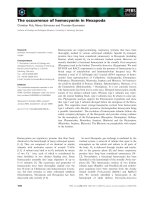
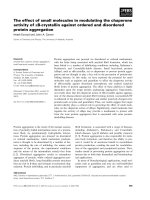
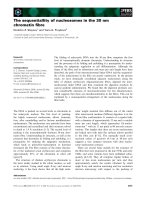
![Tài liệu Báo cáo khoa học: The stereochemistry of benzo[a]pyrene-2¢-deoxyguanosine adducts affects DNA methylation by SssI and HhaI DNA methyltransferases pptx](https://media.store123doc.com/images/document/14/br/gc/medium_Y97X8XlBli.jpg)
